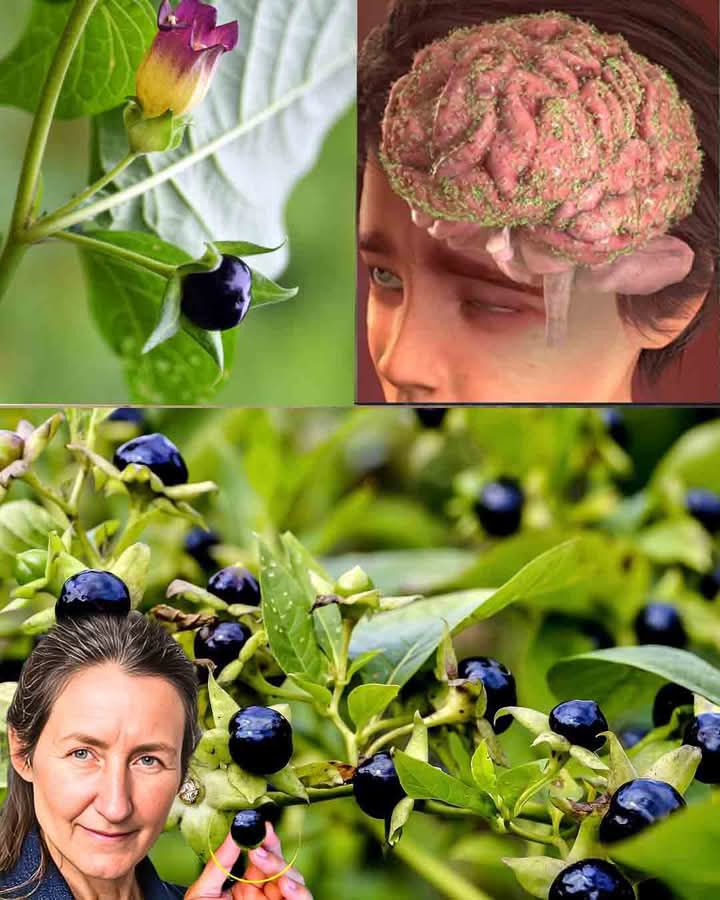ADVERTISEMENT
### **It Grows Everywhere, But This Stunning Plant Hides a Dark and Dangerous Secret…**
Plants are the backbone of our planet, providing oxygen, food, and beauty. For centuries, humans have relied on the natural world for medicine, food, and even shelter. Many of us admire plants for their beauty and the benefits they provide, but occasionally, we encounter plants that have more to them than meets the eye—some of these plants are, in fact, highly dangerous. One such plant that grows nearly everywhere and has a dark and dangerous secret is **the oleander**.
The oleander plant, often prized for its showy flowers and lush foliage, has been known for centuries. It grows well in a variety of climates and conditions, making it a common sight in gardens, roadsides, and even in some wild landscapes. However, behind the vibrant beauty of this plant lies a deadly secret: nearly every part of the oleander plant is highly toxic, and it can be lethal if consumed in even small quantities.
In this article, we will explore the dangerous secrets of the oleander plant, from its toxic nature and historical significance to its effects on human health. We’ll also discuss its uses, both medicinal and decorative, and delve into the various precautions one should take when encountering or growing this plant.
—
### **What is Oleander?**
Oleander (*Nerium oleander*) is a flowering shrub that belongs to the family Apocynaceae. Native to the Mediterranean region, the plant is now found in many parts of the world, especially in temperate and subtropical climates. It is often cultivated for its attractive, fragrant flowers that come in shades of pink, red, white, or yellow, and its lush, evergreen leaves. Oleander is typically grown as a hedge or ornamental plant due to its hardy nature and ability to withstand drought.
Despite its beauty, the oleander plant is infamous for its toxicity. Every part of the plant—leaves, flowers, stems, and even the seeds—contains powerful toxic compounds known as cardiac glycosides. These compounds can interfere with the heart’s ability to function properly, making the plant incredibly dangerous to both humans and animals.
—
### **The Toxicity of Oleander**
Oleander contains a class of compounds called **cardiac glycosides**, which affect the heart and the electrical signals that regulate heart rhythms. These compounds, which are chemically similar to the toxins found in digitalis (another plant known for its medicinal uses), are the primary reason why oleander is so toxic.
When consumed—whether through ingestion of the leaves, flowers, or other parts of the plant—oleander can cause a range of severe symptoms. The toxicity is primarily due to the way the cardiac glycosides affect the heart, leading to arrhythmias (irregular heartbeats), which can be fatal if not treated quickly.
#### **Symptoms of Oleander Poisoning**
The symptoms of oleander poisoning vary depending on the amount of plant material ingested and the individual’s health. Common symptoms include:
– **Nausea and Vomiting**: The stomach may become upset, and vomiting can occur shortly after ingestion.
– **Abdominal Pain**: Severe stomach cramping or discomfort may be present.
– **Dizziness and Weakness**: The person may feel lightheaded or faint.
– **Irregular Heartbeat**: Oleander poisoning can cause bradycardia (slow heart rate) or tachycardia (fast heart rate), both of which can lead to heart failure.
– **Dilated Pupils**: Vision disturbances may occur, and the pupils may become larger than normal.
– **Confusion and Hallucinations**: In severe cases, poisoning can cause mental confusion or even hallucinations.
– **Seizures**: Severe poisoning can lead to convulsions or seizures.
– **Death**: Ingesting a fatal dose of oleander can lead to death due to cardiac arrest.
The symptoms of oleander poisoning can set in quickly, and immediate medical attention is crucial. Ingesting even small amounts of oleander can be dangerous, and fatalities have been reported due to the consumption of the plant.
—
### **The Dark History of Oleander**
The history of oleander is as fascinating as it is dark. Throughout history, this plant has been used not only for ornamental purposes but also as a poison. Ancient civilizations, including the Greeks and Romans, were aware of its toxic properties. It was often used as a weapon in various forms, from poisoning arrows to deadly concoctions.
#### **Oleander in Ancient Cultures**
– **Ancient Greece**: In Greek mythology, oleander was sometimes associated with death and the underworld. The plant’s toxicity was well known to the Greeks, and it is thought that they used the plant in a variety of ways, from poisoning enemies to performing ritualistic ceremonies.
– **Ancient Rome**: Roman soldiers are believed to have used oleander as a poison in battle. It was also used in the assassination of political figures and enemies.
– **Middle Ages**: In the Middle Ages, oleander was sometimes used in poisoning rituals. Kings and nobles often sought out poisons as a way of eliminating rivals. Oleander, with its potent effects on the heart, was a preferred choice for these dark deeds.
However, despite its violent history, oleander was also revered in some cultures for its healing properties, though this was typically associated with extreme caution.
—
### **Oleander’s Medicinal Uses**
While oleander is incredibly toxic, some cultures have used it in traditional medicine. Its toxic properties were sometimes harnessed in small, controlled doses for various treatments. **Cardiac glycosides**, the compounds responsible for oleander’s toxicity, are also used in modern medicine in very small and controlled amounts to treat certain heart conditions.
For Complete Cooking STEPS Please Head On Over To Next Page Or Open button (>) and don’t forget to SHARE with your Facebook friends
